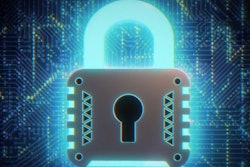
MINNEAPOLIS (AP) — A municipal power utility recently announced one of the largest ever investments in electric vehicle charging infrastructure in Greater Minnesota.
The nonprofit Southern Minnesota Municipal Power Agency (SMMPA) plans to install 17 DC (direct current) fast chargers and 68 Level 2 chargers next year. The chargers will be placed in nearly all of the communities served by the agency’s 18-member utilities.
ZEF Energy, the largest privately-owned charging company in Minnesota and Wisconsin, will partner with the SMMPA on the project. The agency will pay for the chargers but require members to install electrical connections, said Chris Schoenherr, SMMPA’s director of agency and government relations and chief external affairs officer.
SMMPA decided to invest in chargers to reduce “range anxiety” of travelers in the region and to take a “solid first step” in the electrification of the transportation sector, Schoenherr said. Electric vehicle drivers who live in member cities will charge at night and help absorb the utility’s abundant wind power, he said.
The investment follows the Minnesota Pollution Control Agency’s recent decision to install 22 charging stations along major highways in Greater Minnesota using money from the Volkswagen settlement.
Only two cities in SMMPA’s network, Rochester and Owatonna, will receive DC fast chargers as part of the initial Volkswagen spending, he said. SMMPA’s plan calls for those two cities to receive dual Level 2 chargers but not fast chargers. The utility’s charger network does not otherwise overlap with the locations chosen by the pollution control agency.
“We’re trying to augment what’s being done by the MPCA,” he said. “We’re doing our part to fill in some of those gaps.”
Collectively, SMMPA and the pollution agency’s investments create a charger infrastructure across much of Minnesota, said ZEF Energy CEO and founder Matthew Blackler. “This changes everything” by creating a “minimum viable network that’s needed” to make drivers comfortable with traveling outside the Twin Cities, he said.
The investment by a utility should stimulate the market for others to provide fast charging solutions and for auto dealers to stock more electric vehicles, Blackler said. “It requires utility investment to get the market going, but once it’s going third party providers will get in,” he said.
At least initially, vehicles will charge on electricity from a major coal plant. The utility receives much of its electricity from Sherburne County Generating Station’s Sherco 3 coal plant. Xcel Energy and SMMPA own the plant, and both agree it should close in a 2030 time frame, Schoenherr said.
The utility’s coal-dependent energy mix has come under criticism by its members, among them Rochester and Austin. Both those utilities will likely leave the power agency when their contracts end in 2030, Schoenherr said.
But next year the utility begins receiving power from a 100-megawatt wind farm, he said, which will increase its renewables to 20% of its energy mix. By 2025 the utility will receive 25% of its energy from renewables.
When that plant closes, “our portfolio will be made up of significantly more renewable resources,” he said. The utility also has added two natural gas plants since 2014 to reduce emissions and to diversify its generation.
After the likely departure of Rochester and Austin, the need to fill Sherco 3’s load diminishes. “Getting a greater mix of renewables is doable,” he said.






















